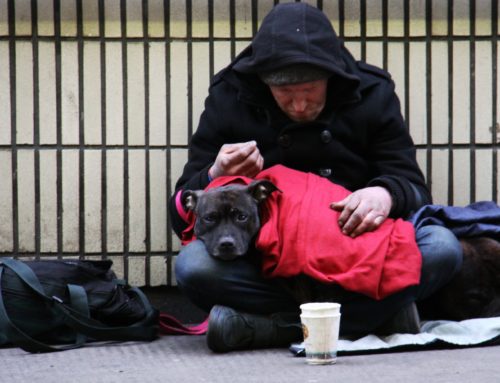In the past several years, homelessness in New York City has reached its highest levels since the Great Depression of the 1930s. As of June 2019, 60,849 homeless people spend each night in New York City’s municipal shelter system, while thousands more unsheltered homeless people sleep in the streets or other public areas.
It’s shocking that one of the richest cities in the world is failing to help its homeless find more stable housing. Is it time for NYC to revamp its strategy? One source of inspiration may come from an unexpected country: Finland.
Finland’s Housing-First Model
While the housing-first model actually did start in the United States, Finland’s innovative approach took it to the next level. The model maintains that homelessness can be solved by offering the homeless permanent housing, so long as they are also provided with social services like a doctor, therapist or a social worker to help rehabilitate and empower them. The permanent housing has on-site services and are built and renovated specifically for chronically homeless individuals. A Salvation Army building, for instance, was renovated from a 250-bed emergency shelter to an 81 apartment housing unit with associated support services.
Like everyone else, the formerly homeless residents pay rent, either with their own money or through benefits offered through Finland’s generous welfare system.
The model is working, too. While the homeless population increases across Europe, Finland’s homeless numbers are decreasing. In 1987, Finland had 18,000 homeless people, but by 2017 there were 7,112 people without homes, of which only 415 people were living on the streets or in shelters. Research shows that between 2008 and 2015, long-term homelessness dropped by 35 percent.
Why is it so successful? According to Feantsa, a European network focusing on homelessness, the model runs off the idea that homelessness is “not…an inevitable social problem resulting from personal issues.” Instead, it’s a housing problem and a violation of fundamental rights — both of which are solvable.
Juha Kaakinen, an architect of housing-first approach and the CEO of the nonprofit Y-Foundation, says, “The Finnish attitude is that we have to help people who are in the most difficult position, whatever the reason they have become homeless.” He continues, “We understand very well that the main reasons behind homelessness are structural reasons.”
The success of this model has caught the attention of several other countries. Kaakinen is often asked to clarify how Finland has garnered such strong political cooperation from its government. He says that it comes down to this: “There has to be some individual politician who has the social consciousness.”
Fortunately, some US politicians are more actively attempting to align their development plans with social policies — and advocates are holding them to it.
New York City Fights for Better Homelessness Prevention
New York City, of course, has embraced its own housing-first approach, though its leaders have been less enthusiastic than Finland’s. Mayor Bill de Blasio’s Housing New York 2.0 plan has promised to set aside 5 percent of its new planned 300,000 housing units for homeless New Yorkers. The new housing plan offers twice as many units as the city’s current housing plan and caters to families who can afford rent above $2,500. Unfortunately, not all of these units offer social services and the amount of homeless people will continue to far outnumber the available units by 2022.
Nonprofits and advocates implore Mayor de Blasio to increase the number of units intended to be built for the homeless, especially as housing-first organizations like Breaking Ground and Pathways could benefit from more housing units to help NYC’s homeless.
Of course, some city leaders cite that limited funding for a more solid housing-first model is a major issue. But while building is expensive, the housing-first model also saves more money in the long-term. Studies have shown that housing a long-term homeless person can save society around $17,000 a year due to reductions in services like hospital emergency room visits, police activity and criminal justice systems.
Plus, in times of scarcity, one might argue that building new housing is economically sound and creates valuable investments with positive, long-term side effects that will reduce youth unemployment and even boost the local economy.
If the housing-first model were fully employed, NYC could more effectively solve its homelessness crisis sooner, before it gets worse. It is only a matter of political will.
Thanks to the work of housing-first nonprofits, there is some hope in sight. These nonprofits — along with advocacy campaigns and partner programs — continue to fight for awareness on the severe homelessness issue. Studies show that residents in housing-first programs report increased levels of autonomy, choice and control. Plus, those who use supportive services are more likely to participate in job training programs, earn an education, stop substance abuse and have fewer instances of domestic violence. Thanks to the support these nonprofits offer, the housing-first model’s proven track record of efficiency and effectiveness is gaining more recognition throughout the country.
Kaakinen hopes that attitudes towards a housing-first approach will start to become more optimistic in countries like the United States.
“There is no quick fix to all life situations, but a solid base provides the foundations upon which to improve the welfare of the homeless. The first step in change is the change in attitudes,” he says.








